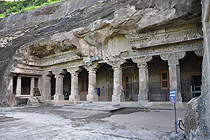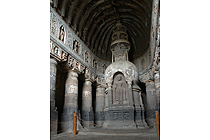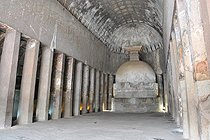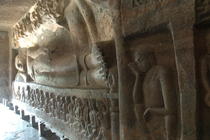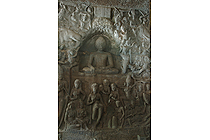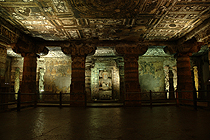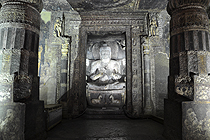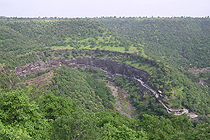Buddhist Caves in India Project
This joint project with Deccan College Post-Graduate and Research Institute aims to re-evaluate the remains as cultural resources through the survey of them, and to research and study the preservation and restoration of them, the possibility of international support, and the issues of tourism development, etc. There are some 1,200 ancient caves existing in India, and about 1,000 of them including small ones from pre-Christian era to the 8th century are concentrated in Maharashtra state in western India. The majority of them are Buddhist caves. These cave temples are mostly open to the public and registered as national or state historic sites, and also World Heritage sites. While some of them act well as tourism resources, others are not fully restored and preserved despite the importance of them. Investigating the current condition of these cave temples and exploring the possibilities of restoring and preserving the caves especially between the 2nd and 5th centuries, this project will present the process of establishing them as cultural resources.
There are more than several million Buddhists in India, because of the neo-Buddhist movement which took place mainly in Nagpur after independence. Re-evaluating the ancient caves from the viewpoints of growing interest in Buddhism within India and cave temples as the objects of worship and pilgrimage, this project will reveal the process of establishing them as cultural resources.



